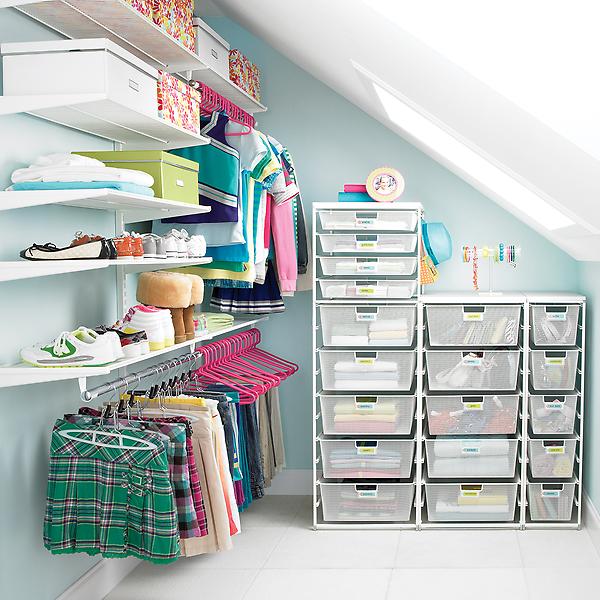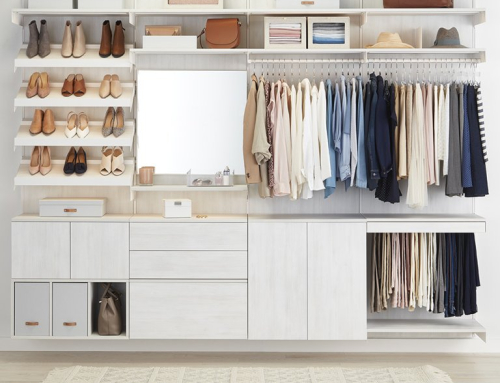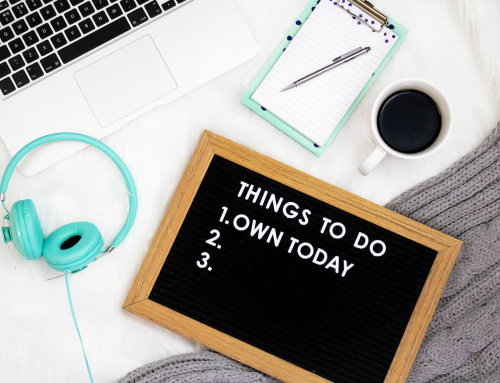Many of my clients tell me they have tried to get organized and just can’t do it. They are smart, capable people, so why haven’t they succeeded? Many times we thwart our own best efforts, but if we make small adjustments in our processes it can lead to huge strides in living an organized life. Below my close friend and fellow Professional Organizer Kirsten Fisher shares some of the top things her clients tend to do to sabotage themselves. See if you can relate…
1. Shop First. Buying cute containers may help motivate us into getting organized but it won’t create the right system. Taking your things and throwing them in a pretty bin is not organization. It won’t last once you start to use it. What should be your first step?
Sort. The first step is always sort. Determine what you have by category. Completely empty the space to put all like items together.
2. Purge Without Sorting. It seems natural that the first step should be to eliminate items that you don’t need. And that is true. However, if you don’t sort before you determine what will be eliminated you won’t discard nearly as many unneeded items. If you take a passing look, you won’t discard a whisk or a black tank top as it will seem like a necessity. But once you sort, you will realize you have multiples of many items. How do you make sorting most effective?
Completely empty a space to put like items together. If you don’t, the space will never be fully organized as unused items will hide where you aren’t looking. If you have a lot of a single category, try to break down into further refinement. For example, if you have many shirts, categorize by type. If you have many of one type, further refine by color. Then review all items and determine what you don’t like, don’t need or don’t really have room to keep.
3. Homeless Items. If you move your items around without defining their best home, your space will look tidy for the moment, but it won’t stay that way. Every item needs a defined home. How do you define the best home?
This may be a container, a drawer or a spot on the shelf, but it should be close to where you use it, as accessible as how often you use it and containerized, so it will stay well within the home.
4. Bad Bones. If your storage space is mismatched with what you want to store, you will never be able to maintain access to the things you want. The most common example of this issue is the standard closet with a single hanging rod, especially if that closet is not used for clothes at all. Often, we try to store office supplies or general home storage in this space and we end up piling bins or fighting with cheap plastic drawers. What is really needed is a better storage system. How do you decide the right system for your needs?
First, decide how you will use the space. Do you need long hang, short hang, shelving or specialized systems like a peg board or track system? Once you determine what you need based on your sorting, containerizing and finding homes, you will need to confirm what system provides these needs. My first choice is nearly always the Elfa system from The Container Store. It is amazingly versatile, durable and stylish.
5. Lack of Commitment. Part of maintaining organization is changing bad habits. You can set up the right structuring avoiding all the pitfalls, but if you don’t change any habits, you will likely overfill your spaces again, pile up all the clear surfaces and start building barriers to the systems you had in place. What are some of the most important habits to change and new ones to develop?
Don’t let unneeded items enter your home. Whether that means opening the mail in front of the recycle bin or thinking twice each time you make a purchase, having less stuff makes it easier to stay organized.
Use your system. Take the few extra moments required to return items to their home once they have been used. If you have created the right home for an item, this task should be easy and doing it as soon as the item is no longer in use, saves time and effort in the long run.
Do regular maintenance. If you have kids or other people using your home, any system is going to need an update regularly. Take a few moments every few weeks to return discarded items to their home and dispose of things that are not needed. Ten minutes a week will keep you from having to spend an afternoon when things pile up.
To read the original blog post, click here.
For more information on Kirsten Fisher, CPO, visit ImagineHomeOrganization.com.











Leave A Comment